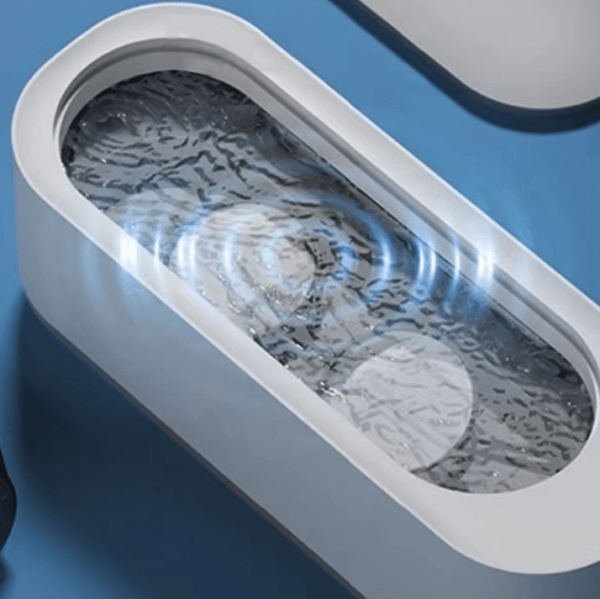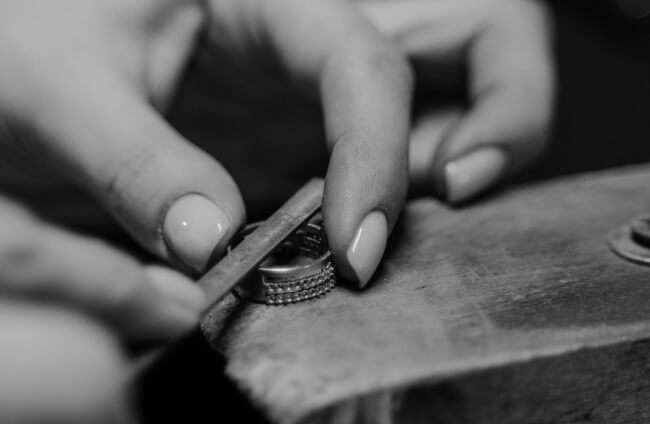- by Deema Yanni Maat
- 31/01/2024
- Jewellery Education, Metallurgy, Mixed Metals
Are Jewelry Cleaners Safe?

Are Commercial Jewelry Cleaners Safe? Myths, Truths & Best Practices
In the world of precious gems and metals, the allure of sparkling jewelry is undeniable. A well-polished ring or necklace doesn’t just shine—it radiates elegance and confidence. Yet, as wearers, many of us wonder: are commercial jewelry cleaners really safe?
With countless products on the market promising to restore brilliance, concerns about potential damage, tarnish, or chemical effects often linger. The truth is, not all cleaning methods are created equal, and knowing which ones to trust is essential if you want to preserve the beauty and integrity of your pieces. Let’s debunk some common myths, uncover the facts, and explore safe ways to keep your jewelry glowing for years to come.
The Common Myths About Jewelry Cleaning
Myth 1: Harsh Chemicals Cause Harm
Myth: Commercial cleaners are full of harsh chemicals that damage jewelry.
Truth: Reputable jewelry cleaners are carefully formulated to be safe for a wide range of metals and gems when used as directed. They undergo testing to ensure compatibility with delicate materials, from sterling silver to diamonds. The danger usually lies not in the cleaner itself but in misuse—leaving pieces submerged too long or applying cleaners to unsuitable gemstones.
Myth 2: Home Remedies Are Always Safer
Myth: DIY solutions like toothpaste, baking soda, or vinegar are always gentler and safer than store-bought cleaners.
Truth: While some home remedies work for certain materials, many can actually cause harm. For example, toothpaste contains abrasives that can scratch gold or soft gemstones, while baking soda may be too harsh for plated finishes. Vinegar and lemon juice, though natural, are acidic and may corrode delicate metals. The key is understanding what your specific jewelry is made of before trying DIY solutions.
Myth 3: Ultrasonic Cleaners Are Risky
Myth: Ultrasonic cleaners can loosen gemstones, damage settings, and should never be used.
Truth: When used properly, ultrasonic cleaners are both safe and effective. They use sound waves to gently lift dirt and debris, making them excellent for hard gemstones like diamonds or sapphires. However, they are not recommended for porous or delicate gems such as opals, emeralds, or pearls, and extra care should be taken with vintage or fragile settings. Always consult your jeweler or follow manufacturer guidelines to avoid risk.
How to Ensure Safe Jewelry Cleaning
1. Read the Labels Carefully
Choose commercial cleaners with clear instructions and avoid products with vague descriptions or excessive chemical warnings. Look for cleaners recommended by jewelers or endorsed by jewelry associations. A well-labeled cleaner should state which metals and gems it is safe for.
2. Know Your Jewelry
Different materials require different care:
Gold & Platinum: Can usually tolerate commercial cleaners and ultrasonic machines.
Sterling Silver: Requires cleaners designed to combat tarnish without stripping shine.
Plated Jewelry: Needs extra care—harsh chemicals and abrasive cloths can strip the finish.
Gemstones: Hard gems (diamonds, sapphires, rubies) are safer to clean than porous or treated stones.
When in doubt, consult your jeweler to learn the safest method for your specific piece.
3. Test Before Full Application
Always perform a small test on an inconspicuous area before fully immersing your jewelry. This precaution helps ensure that the cleaner is compatible and won’t cause discoloration, dullness, or surface damage.
4. Schedule Professional Maintenance
Jewelry is not just about shine—it’s about structural integrity. Over time, prongs can loosen, and clasps can wear down. Visiting a professional jeweler periodically ensures that your stones are secure and your settings intact. Professional cleaning services also use safe, specialized techniques tailored to your jewelry’s composition.
Deema & Co.’s Approach to Jewelry Care
At Deema & Co., we want your jewelry to last for years and look as radiant as the day you bought it. That’s why:
Every purchase comes with a microfiber polishing cloth designed specifically for all of our pieces. It’s safe, gentle, and effective for restoring shine without risk of scratching.
Important Warning: Please do not use chemical polishing cloths on any plated jewelry. They are too abrasive and may cause fading or discoloration.
Care Made Simple: For day-to-day upkeep, wipe your pieces after wearing to remove oils and moisture. For deeper cleans, follow our care guidelines or bring your jewelry in for professional cleaning.
Final Thoughts: Shine Safely, Wear Confidently
In the quest to maintain the luster of our cherished jewelry, knowledge is key. Commercial cleaners, when used correctly, are generally safe and effective. But awareness of your jewelry’s specific materials, cautious testing, and occasional professional maintenance are just as important.
By dispelling myths and embracing informed practices, you can confidently enjoy the brilliance of your jewelry without fear of damage. At Deema & Co., we believe jewelry is more than adornment—it’s a reflection of your story. With the right care, your favorite pieces will sparkle brilliantly not just today, but for generations to come.
✨ Shop with Deema & Co. today and receive a complimentary microfiber polishing cloth with every purchase—because your jewelry deserves the care it was crafted for.
Warning: Please do not use chemical polishing cloth for any plated jewellery.


